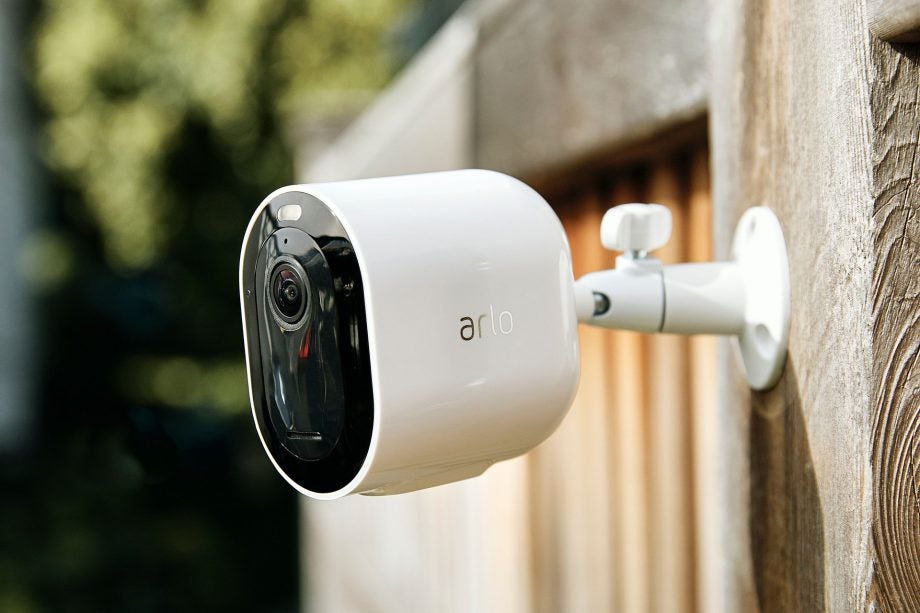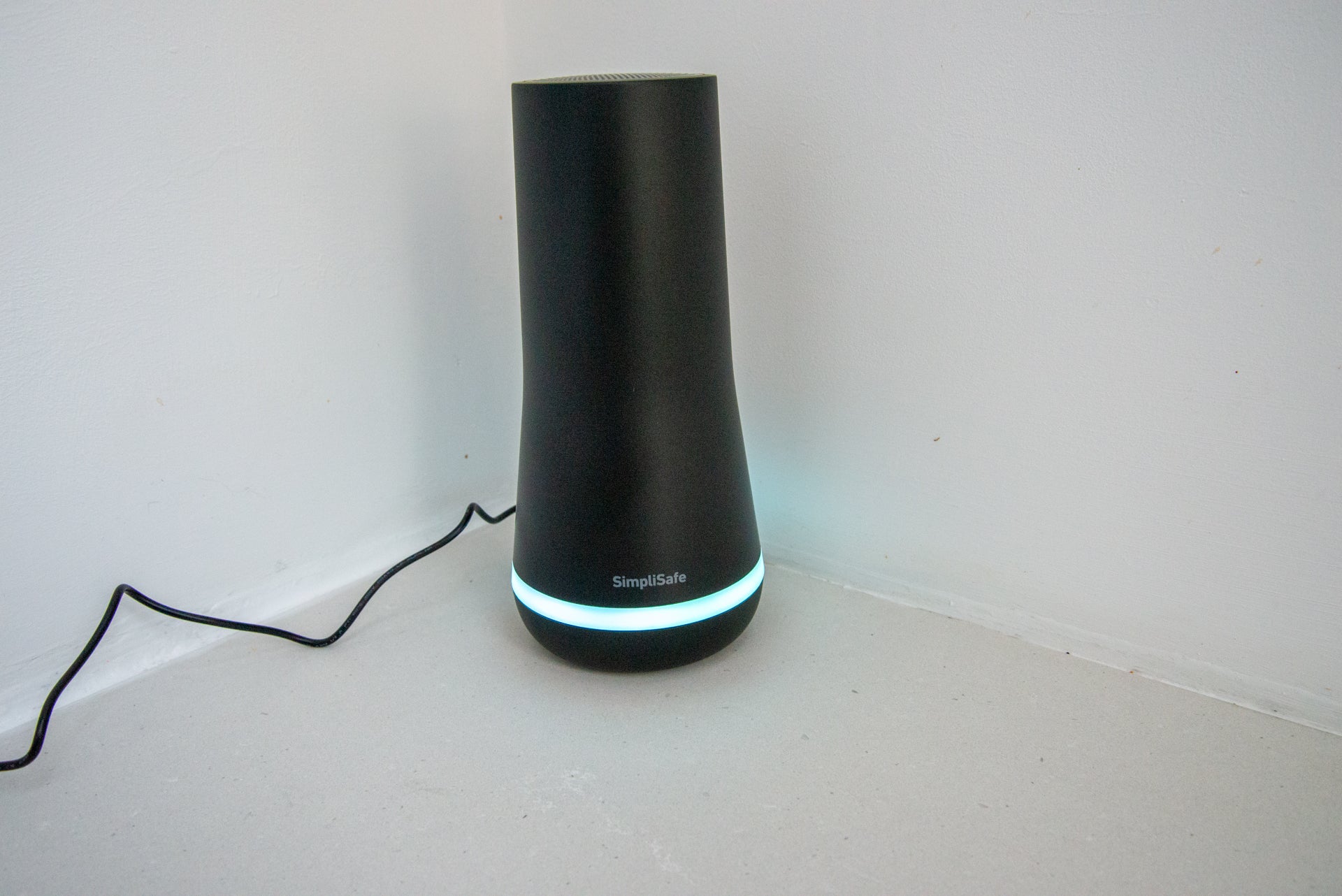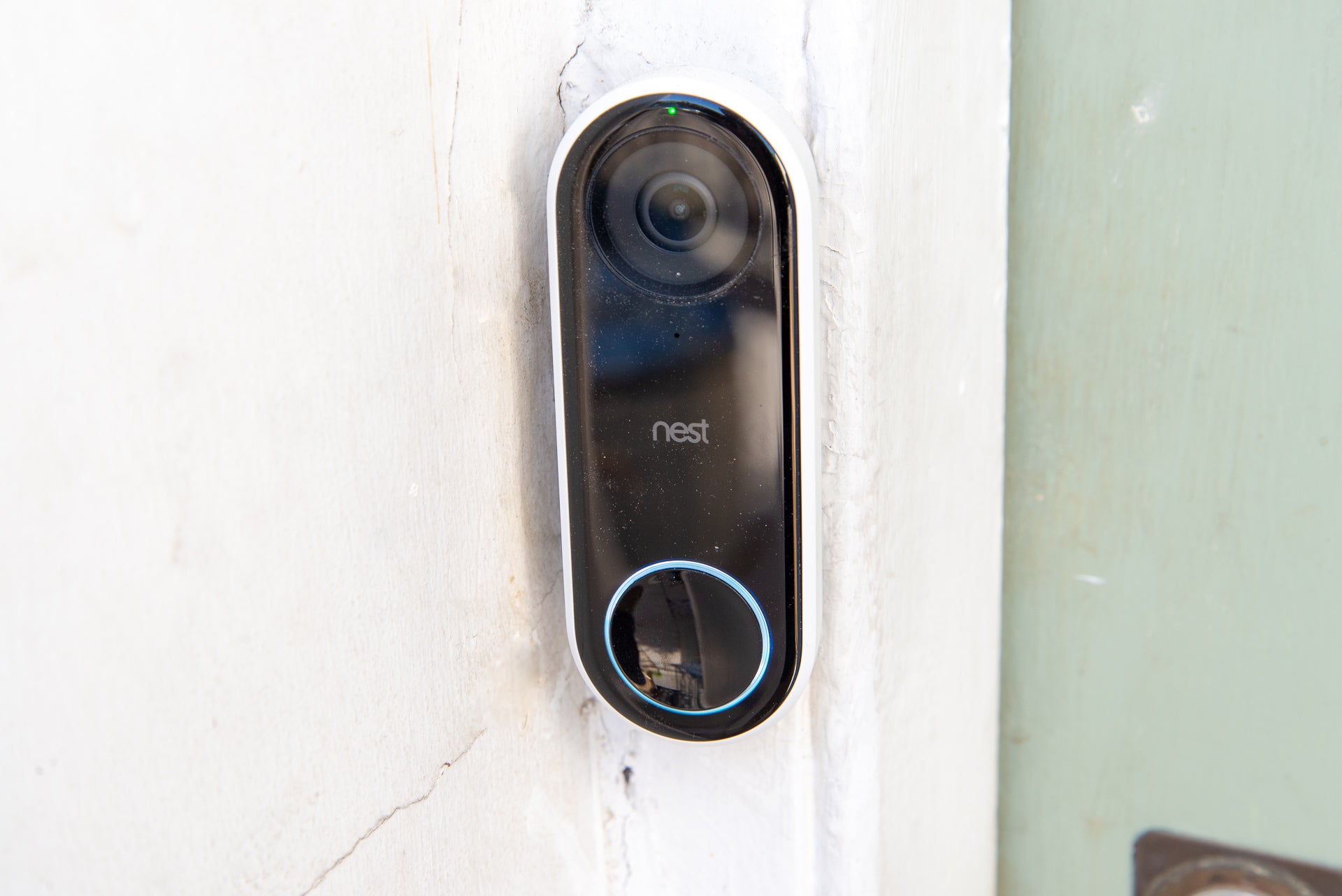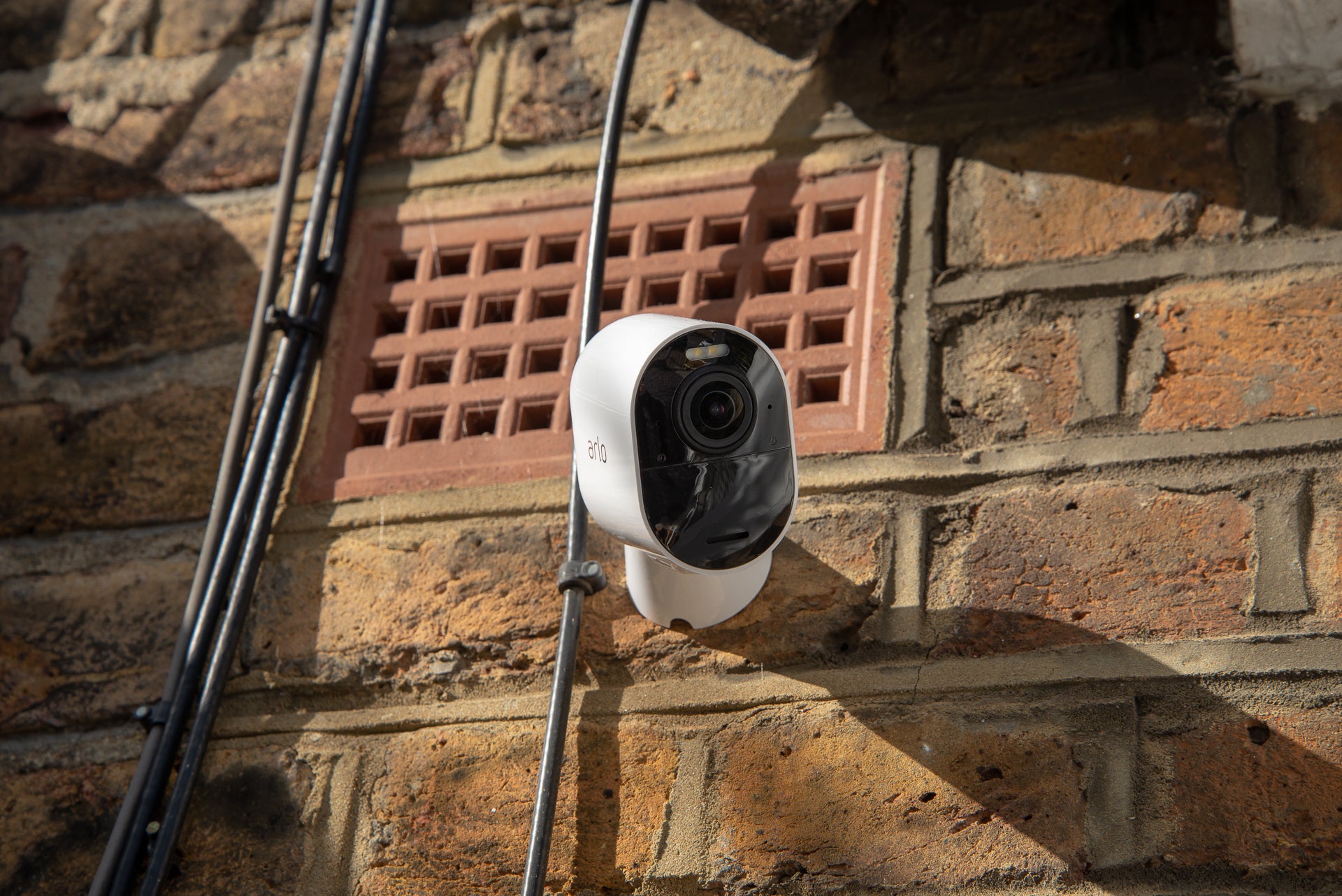How to secure your home with tech

Although with the state of the current lockdown, general burglaries should be on the wane, there are still other threats. It makes sense to secure your home with tech to prevent as many threats as you can, protecting your house and family.
In this guide, we’ve listed the best tech that we’ve reviewed to help you do that, so you can monitor and protect your home and possessions.
Get a smart alarm system

It looks like a smart speaker, but this is the brains and siren of the system
A smart alarm system is a DIY way to secure your home with tech. With these kits, you can put sensors where you need them, monitoring for movement and/or windows and doors being opened. Should the alarm be triggered, then you’re sent a notification to your phone, letting you know that something’s up.
These kinds of systems are easy to self-install, but you first of all need to buy the right kit for your house. The main forms of protection are entry sensors and motion sensors. Entry sensors are fitted to doors or windows, and use a simple two-part sensor: when you open a door, the sensor is removed from a magnet, triggering it.
Entry sensors should be used on all easily-accessible windows and doors, such as those on the ground floor and windows on higher floors above flat roofs, bay windows and the like.
Motion sensors are designed to pick up movement. They’re great for covering areas where entry sensors can’t easily be placed, and are a useful backup in any case. Motion sensors work well in areas where a thief would have to go. For example, place a motion sensor in a corridor, and you’re bound to catch someone.
If you’ve got pets, look for a pet-safe motion detector, which will ignore the movements of small animals. However, positioning is important: if a cat jumps up onto a table in front of a motion sensor, this can trigger it.
Some packages have additional sensors, such as window-break sensors that will detect someone smashing a window or trying to force their way in. Panic buttons can be useful, too, letting you trigger the alarm manually if you think you’re in danger.
Most alarm systems have three modes that you should use: armed turns on all sensors for when the house is empty; disarmed turns off all sensors; home mode turns on a few sensors. The latter mode is useful at night: you can, for example, turn on all entry sensors and motion sensors downstairs, but leave upstairs sensors off. That way, if someone breaks in at night, you’ll still be notified.
It’s less common, today, to find an alarm system with an outdoor siren, with most sounding internally. You’ll also get a notification sent to your phone. For better protection, look for a system with some kind of monitoring.
The Ring Alarm, for example, has assisted monitoring: if the alarm is triggered, you get repeated phone calls until you answer, drawing attention to the fact that something has happened. This is better than a notification on your phone, which can be easily missed. Once you get the call, you can check your cameras to see if someone is in the house.
SimpliSafe is more expensive, but this alarm system has full monitoring. If someone breaks in, the alarm centre can check your camera’s feed and dispatch police automatically for you. Perhaps you don’t quite need this level of protection today, but when the lockdown is released, you may want the extra peace of find that full monitoring gives you.
Smart doorbells

Smart doorbells are about more than giving you a camera at the front of your house and are more than a method of making it more convenient to answer the door: they give you that extra layer of protection, too.
Protection comes in two forms. First, you don’t have to go to the front door, so you can have contactless conversations with whoever is there. This gives you the secondary benefit that you don’t have to open the front door, either, preventing anyone from forcing entry into your home.
There are two main choices. Ring has the best range, with the battery-powered Ring Video Doorbell 2 the easiest to install, although the mains-powered Ring Video Doorbell Pro is the better system. If you have an Amazon Echo, Ring is the best choice, as your smart speakers and smart displays let you know when someone is at the door and let you answer.
The Nest Hello is technically the better video doorbell, recording 24/7, so acting like a smart security camera. If you have a Google Assistant smart display, you can answer your doorbell from there, too, saving having to reach for your smartphone.
Smart cameras

Cameras are a great way to keep an eye on your property. There are two types of camera: indoor and outdoor. I slightly prefer the outdoor models, as people have to come from outside to get in. Plus, do you want to run the chance that you can record yourself walking around your home? Our guide to the best security cameras has the top choices that you can make.
We’ll give a bit of advice here, though. First, make sure that you can control your cameras to only record when you want them to, say scheduling indoor cameras to turn on at night or when you leave your home. The Arlo Pro 3 is an excellent system for this kind of control, giving you wireless indoor/outdoor cameras.
Secondly, use features to suppress how many notifications you get. For example, cameras with activity zones let you focus on the part of the image that you want to monitor, ignoring motion in, say, a busy road.
Finally, smart cameras can be used as a type of intercom system if you don’t have a smart doorbell. Use an outdoor camera with a two-way chat facility, for example, and you can talk to anyone that comes to your door without having to make physical contact or open your door.


